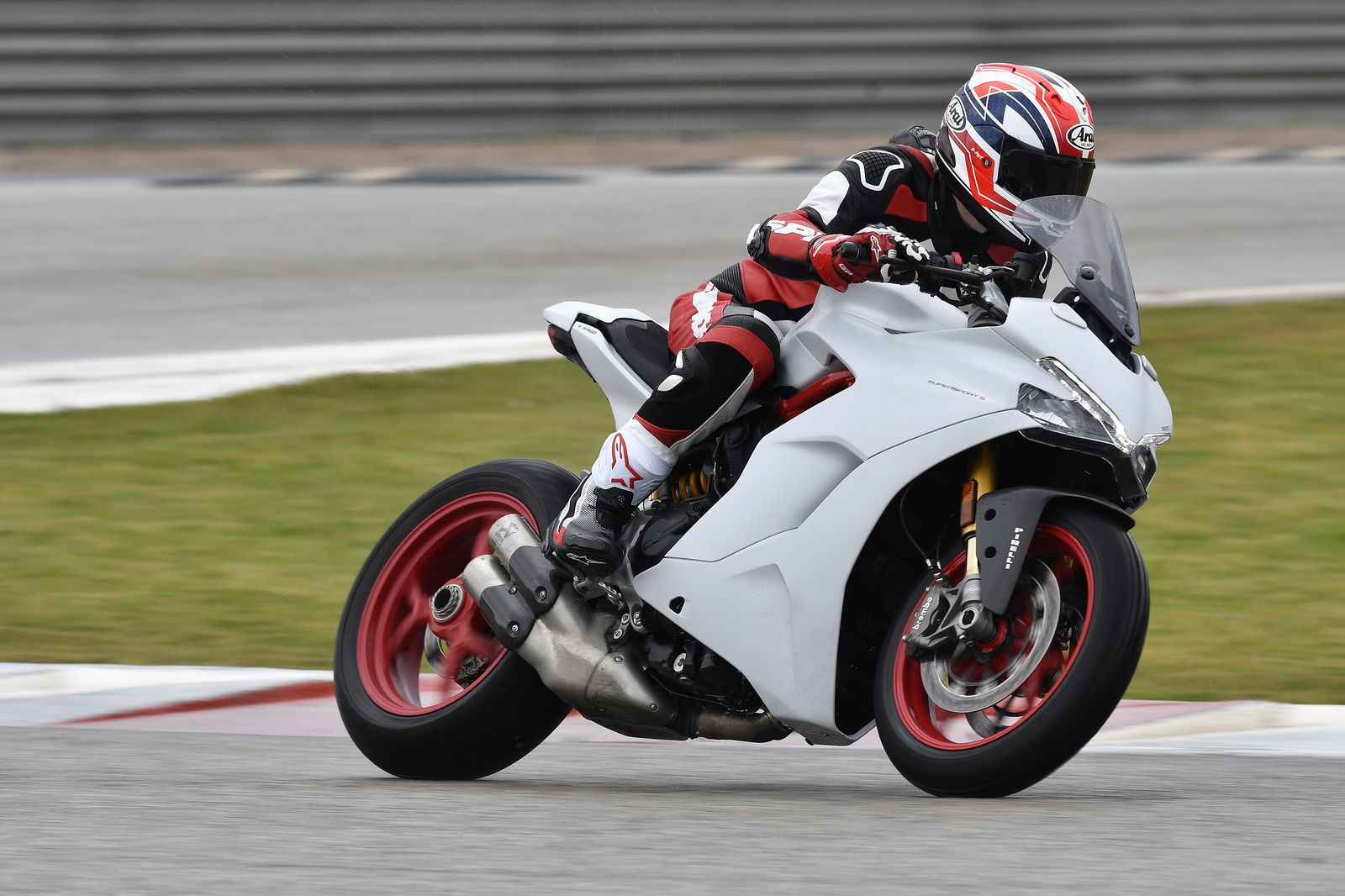First ride: KTM 1290 Super Adventure S review
So good, I’m not sure if I rode it or it gave me a lift
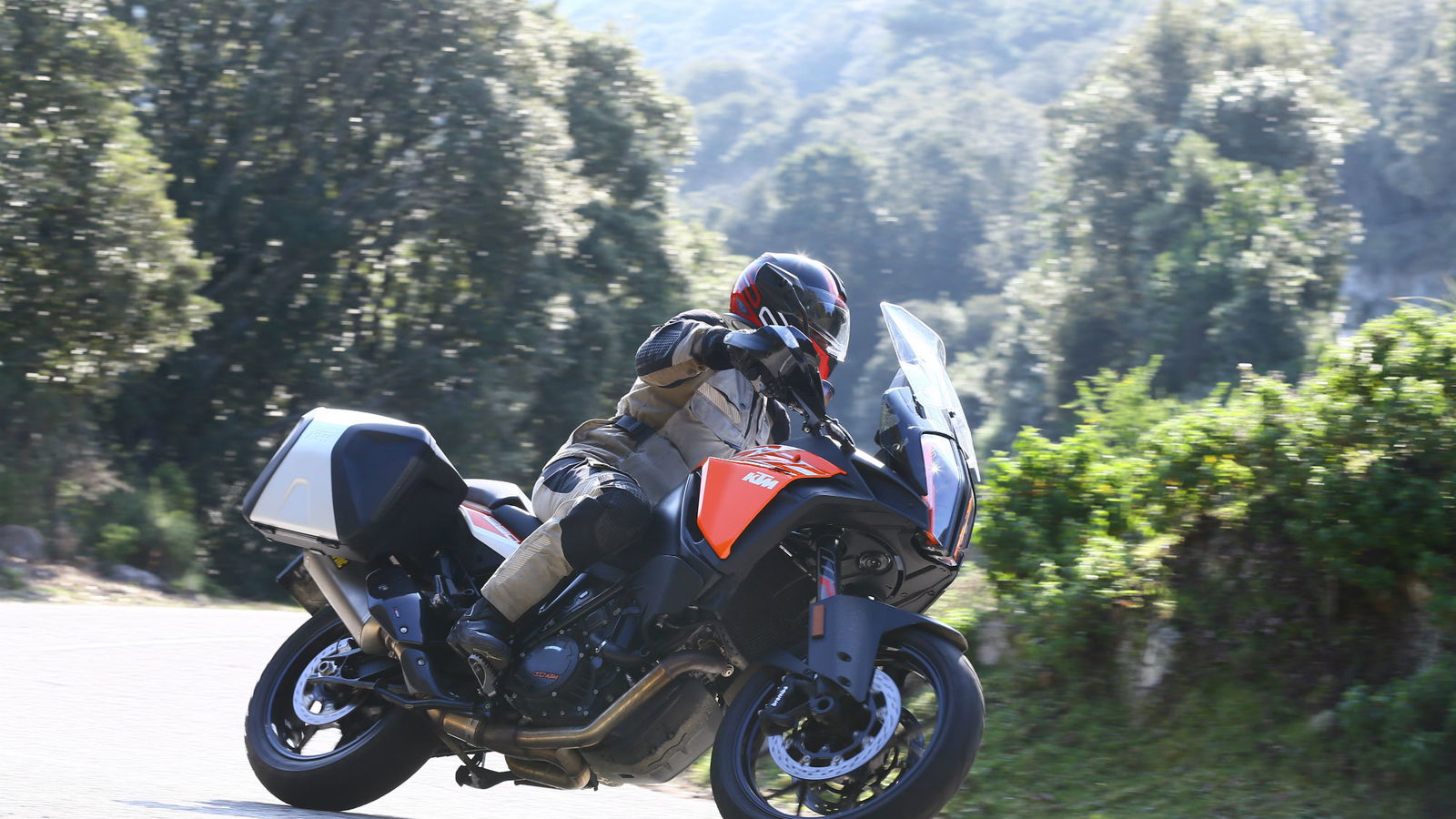
WHATEVER else you think about KTM, the firm can claim to take a leading role in introducing new technology to motorcycles.
It was the first to bring us cornering ABS, in the 1190 Super Adventure. I remember coming away from the launch in late 2013 thinking it was perhaps the most impressive motorcycle I had ever ridden.
I think the same of the 1290 Super Adventure S, effectively the latest iteration of the same model, having just ridden it at the launch in Corsica.
In fact there are three new iterations of it. Last year's model, the 1290 Super Adventure, has become the 1290 Super Adventure T. And KTM has added to it two new editions: a "more off-roading" one called the 1290 Super Adventure R and more sporty one - the one I rode - called the Super Adventure S, with new cast aluminium wheels instead of wire-spoked.
Read about the new range here.
According to KTM it's got the ‘world’s leading electronic package’ and if they hadn't said it I might have.
It's got everything: lean-angle-sensitive traction control, riding modes, cornering ABS, semi-active suspension and an up/down quick-shifter.
It’s got ‘motor slip regulation’ to prevent the rear locking after downshifts. It’s got hill-start assist to stop you rolling backward.
It’s got off-road traction control and ABS modes (because KTM tells us it still has off-road potential despite being the road-biased variant).
It’s got cruise control, tyre pressure monitoring, a new colour TFT dash and a pocket and USB charger for your phone. That’s where I put the key for the keyless ignition during the test ride, so I just had to press a button to go.
The position of the bars, footrests, gear lever and dash are all adjustable.
It’s got a plutonium-powered nuclear fission reactor.
And only one of those things is made up.
It’s got e-v-e-r-y-thing. It would be much quicker to list what it hasn't got, a list which I think might amount to launch control. And it doesn’t need that.
At 160hp, it's got peak power that the safety lobby might deem unnecessary. But, although power like that does require respect, its advanced rider aids make it in many respects one of the safest motorcycles you can buy.
It's possibly the most confidence-inspiring bike I've ever ridden. The semi-active suspension automatically adjusts damping to the demands of your riding. So as you brake for a corner, damping is increased to inhibit fork dive. As you tip the bike into a lean, damping will reduce again to give you a better feel for the front tyre.
I won't pretend I have a sense of these adjustments being made as I ride but I know the effect is that the bike has seemingly unflappable poise. Brake late and hard and it still goes into the corner as if you'd allowed everything to settle before tipping in.
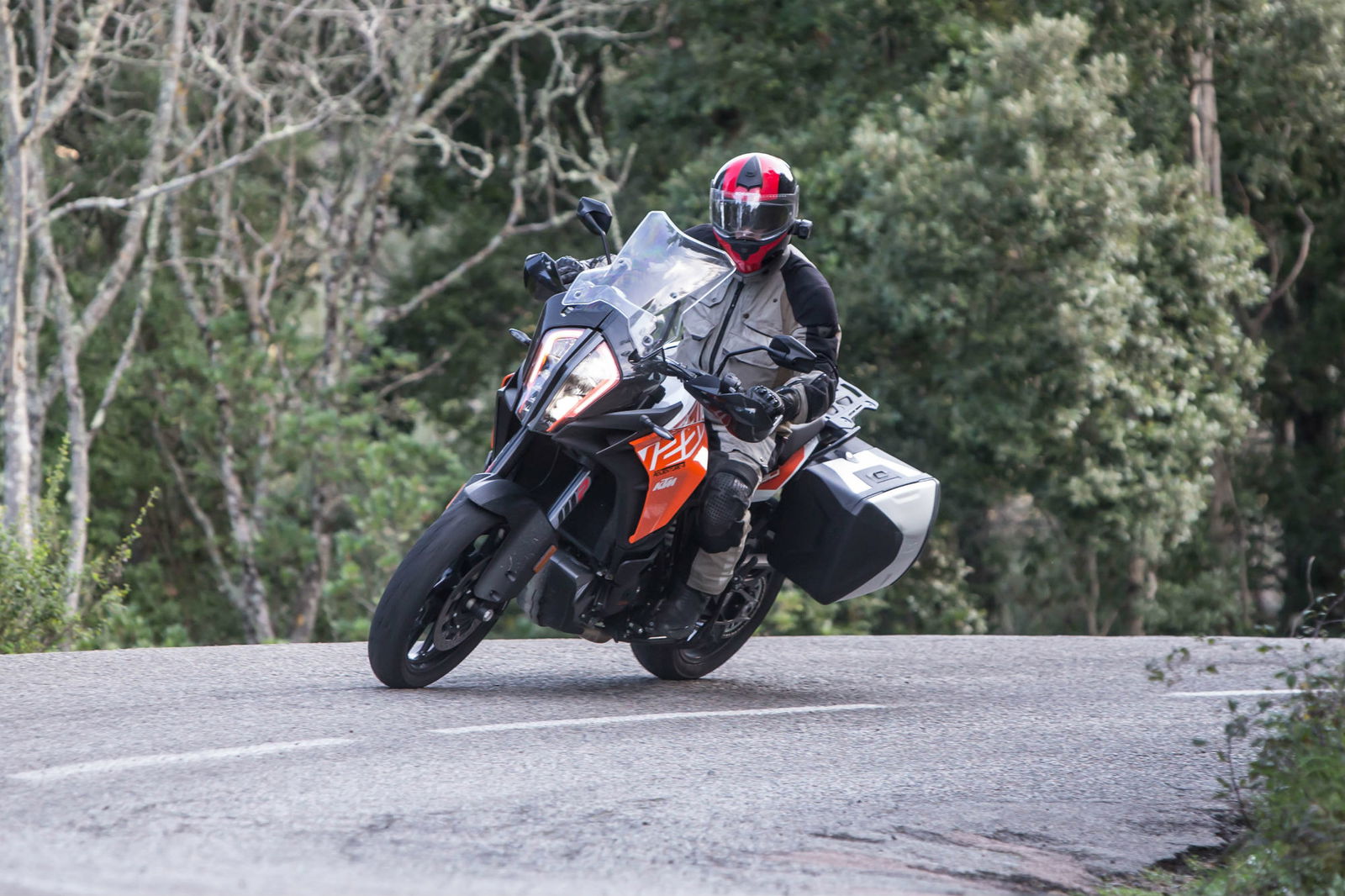
Change down too aggressively and the motor slip regulation takes care of that too, by opening the throttle just enough on your behalf to prevent the rear locking. Only once did I feel the rear break loose, and just for an instant.
Open the throttle early and the same constant adjustments ensure a similar poise is retained as the 1301cc V-twin unleashes its torque, which is over 73lbft by 3,000rpm according to KTM.
The traction control uses the bike's inertial measurement unit to adapt its intervention to your lean angle, moderating the drive to give you just enough to power out of the corner without ending up facing the wrong way.
Again, I remember testing an earlier generation of this on the 1190, whacking open the throttle with the bike at a lean on some cobbles at a Bosch test facility, and feeling the controlled squirrelling of the rear tyre hunting for grip.
It meant I had complete trust in the 1290’s traction control, a trust it didn’t betray.
The torque, rising to a peak of 103lbft, makes gear changes almost unnecessary. Leave it in third and reel in the next corner. The front will lift at about 5,000rpm and that also comes with a sense of unflustered poise and control, even to the wheelie-shy like me.
When you do change up, the quick-shifter means there’s no need to close the throttle or trouble the clutch. Just notch it up one for more of the same, only faster. More of that torque and power and more of that distinctive, rough-sounding KTM engine roar, with a burble when you ease off.
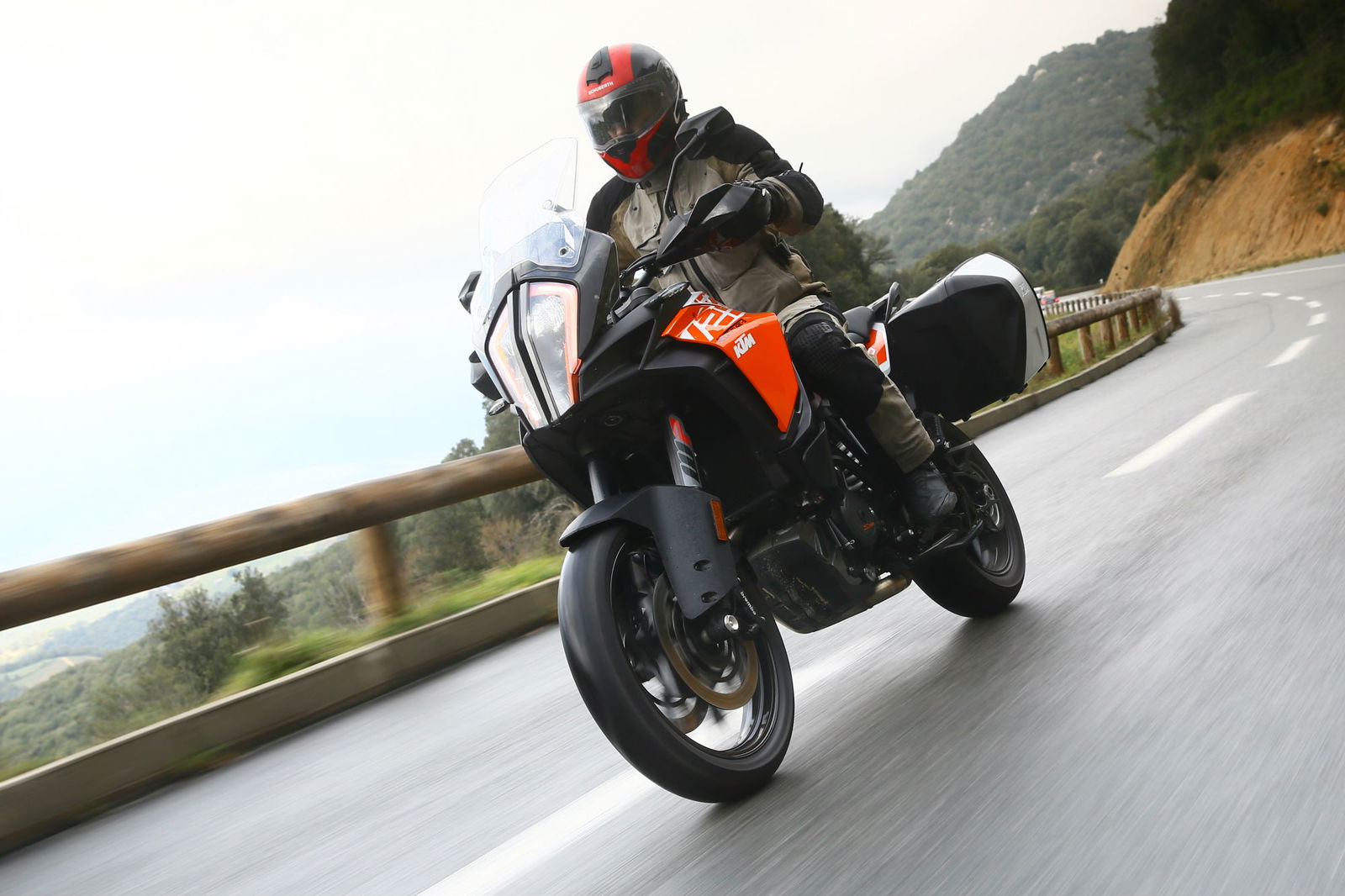
Clutch-less downshifts are just as smooth, contributing further to its seemingly guaranteed poise as you approach the next corner.
The effect of cornering ABS, which also uses the inertial measurement unit to adapt to lean angle, is that you can grab a handful of front brake mid-corner.
Where normal ABS would not be able to prevent either the front from washing out or the bike from standing up and going straight on into a field, cornering ABS can. What happens is the bike simply slows and stops, without deviating from your chosen trajectory.
An experienced rider probably shouldn’t feel the call to use it, but it's nice to know it's there on unfamiliar twisty roads.
The sum is a bike that is so flattering, that makes it so easy to ride well, it feels a bit like the machine is doing all the work.
Semi-active suspension introduces a changing variable between you and the wheels, so inevitably some directness is lost. When you're clumsy, the bike isn't. It absorbs your clumsiness.
Without the forks diving so much, without the bike going into a corner unsettled when you stay on the brakes too long, without the rear locking when you change down too aggressively - it's almost like being a passenger on a motorcycle that is so excellent it’s making you an excellent rider.
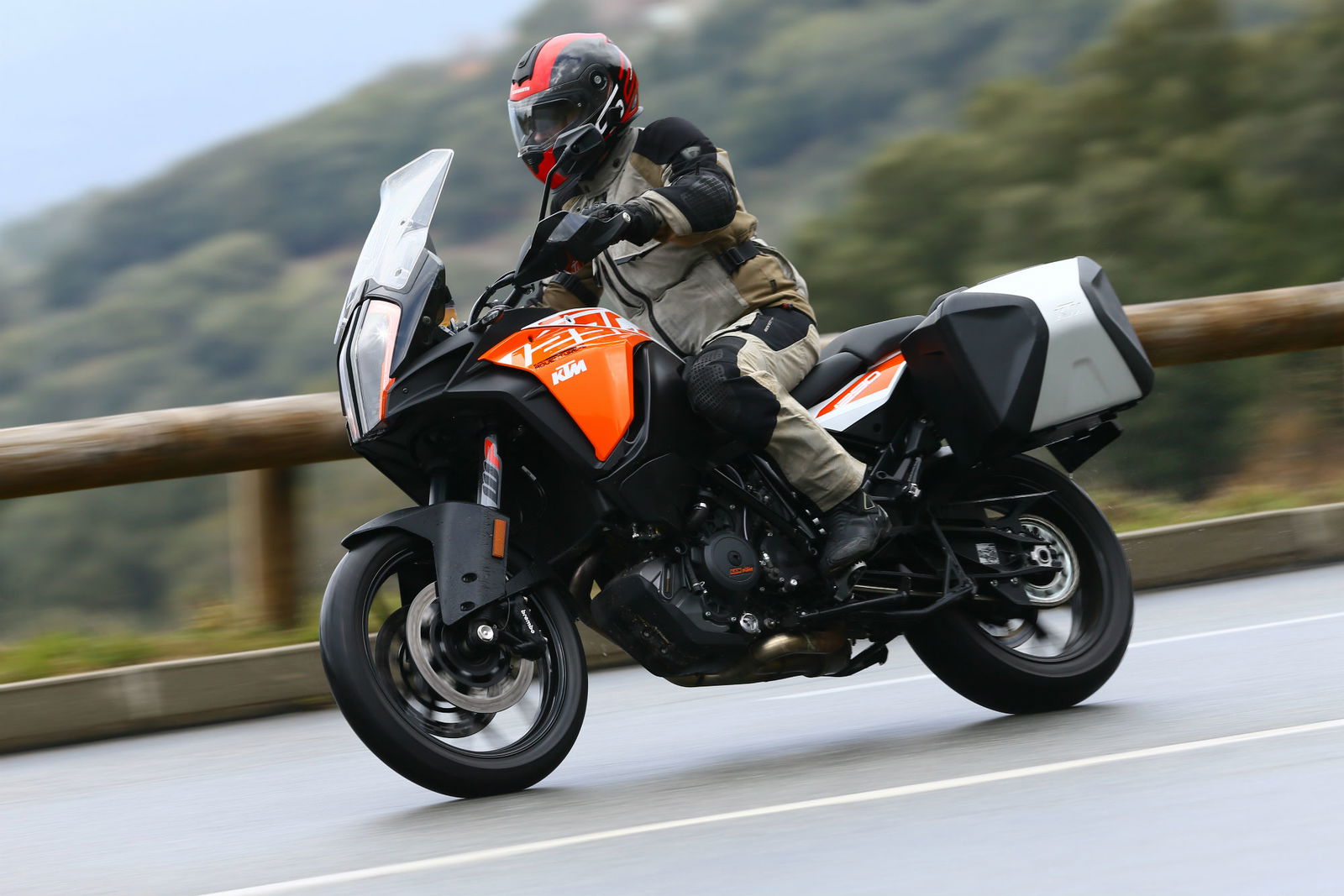
Riding it as fast as you can involves an element of trust that it will continue to do so. But it inspires that trust, and so 'as fast you can' becomes a bit faster.
I sometimes wondered if I could have used more bite from the front brake – twin four-pot radial-mounted Brembos – but it may be that the absence of the normal associated drama detracted from the impression of bite. The motorcycle stops quickly.
Your lean angles increase - and the Pirelli Scorpion Trail II tyres inspired confidence too.
Even with the optional panniers fitted, it tips into corners readily. The initial throttle response is smooth and manageable, even in Sport mode, so it’s easy to feed in the desired amount of drive through the bend.
From the saddle, the 1290 Super Adventure S doesn’t create quite the impression of bulk that BMW’s R1200GS does. For me that makes it seem a more natural prospect to hustle around. It could be psychological – the GS also handles superbly. The KTM’s claimed weight figure is a dry one of 215kg, while the BMW’s is 244kg fuelled.
The 1290 is also significantly more expensive, at £14,299 compared to £12,250, although that’s based on the starting price for the lowest-spec GS.
Although it’s undeniably a large motorcycle, the 1290 is as easy to manage at low-speed as at high. I could get the balls of both feet comfortably on the ground, and I’m 5’9”. The wide bars aid manoeuvrability.
The hill-start assist feature keeps the rear brake on after you release it, and then disengages as you pull away.
Sport mode is where I spent most of the morning test ride in Corsica. The other riding modes are Street, Rain and Offroad, each offering a different degree of traction control intervention.
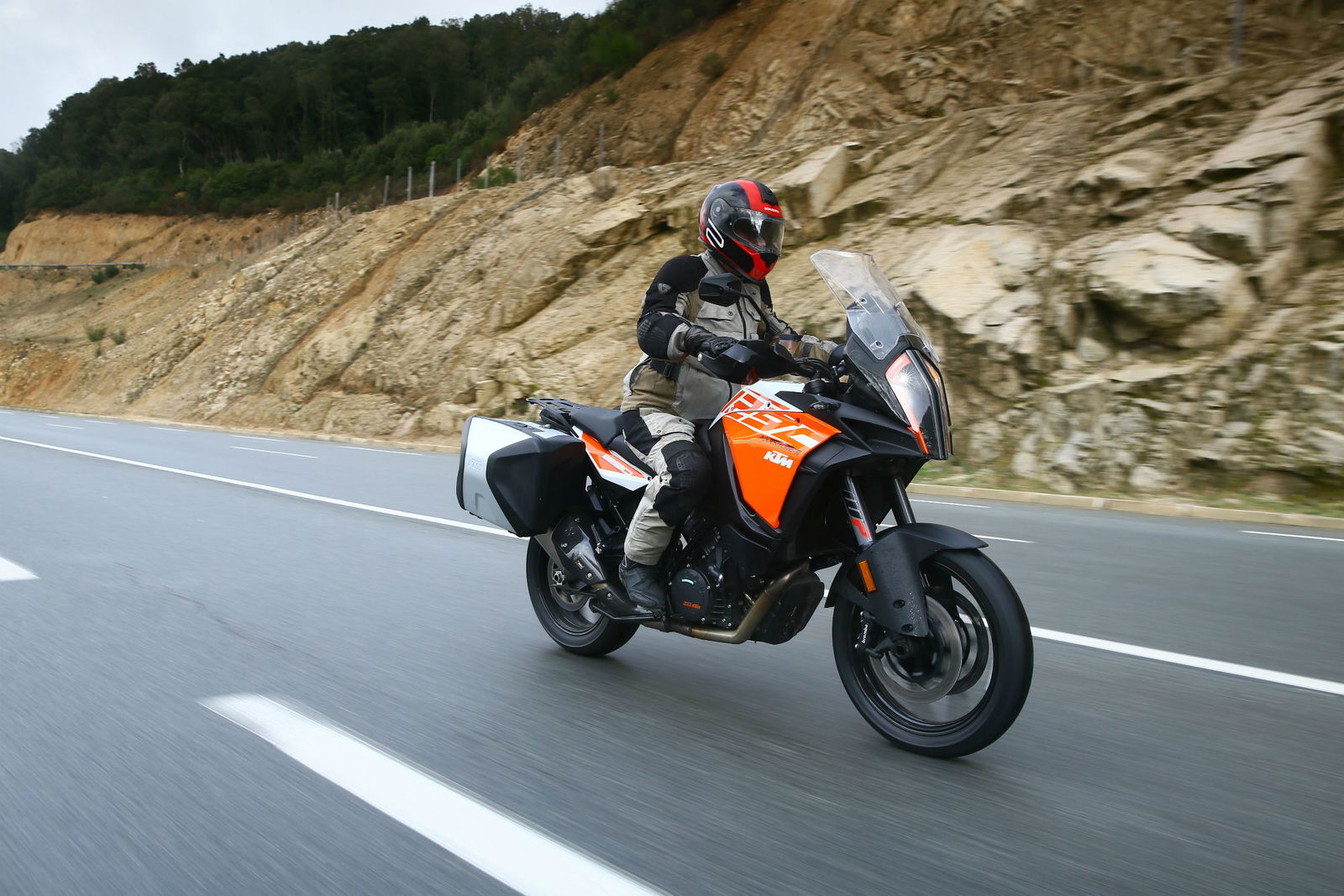
I also spent most of the ride in the Sport suspension mode, the others being Street, Comfort and Offroad, each with a different level of damping control.
The shock additionally has four preload settings: solo, solo with luggage, two-up and two-up with luggage.
KTM says the intervention in damping is reduced in Offroad mode, presumably reinstating some of the direct link between action and consequence.
Whether I rode it, or it gave me a lift somewhere, the first thing I did on getting off this motorcycle was a brief, gushing Facebook Live report about how much I loved it. I’m still gushing about it.
So much that I haven’t got around to updates.
They include new optional ‘floating’ panniers, which means they can absorb wind buffeting without transferring the forces to the chassis.

The TFT colour dash is new, and very attractive, made from tough Gorilla glass with minimal glare. My only reservation about complex displays like this is that I don’t want to navigate through menus of settings at the same time as riding a 160hp motorcycle. I suppose you don’t have. You can choose settings while stopped and leave them till you stop again, which is what I prefer to do.
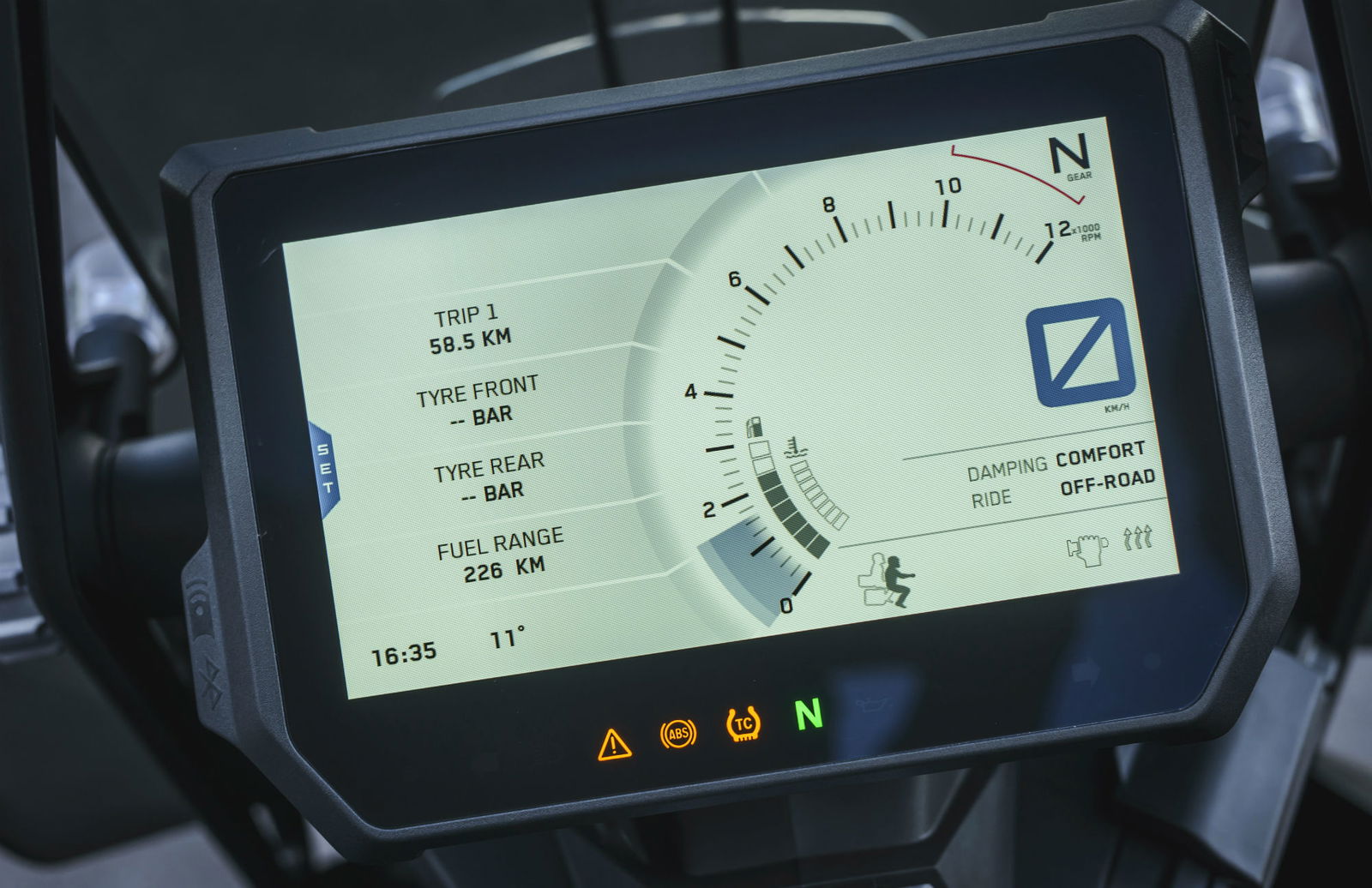
You can also set quick-select preferences, which you then just switch between with the up/down switches on the left bar.
There’s a new one-handed operation for adjusting the height of the screen. Now you just turn a knob, where you used to have to turn it and lock it in position.
The new 1290 Super Adventure S is of course Euro4 compliant for emissions.
And it’s got new a cornering headlight, with additional LEDs on each side of the headlamp unit which illuminate at a lean to light the way around bends.
I didn’t expect to be hugely impressed by these. Too often I’ve heard manufacturers make a lot of noise about ultimately inconsequential changes to LED arrangements. The last time one of them demonstrated new cornering lights they simply didn’t work.
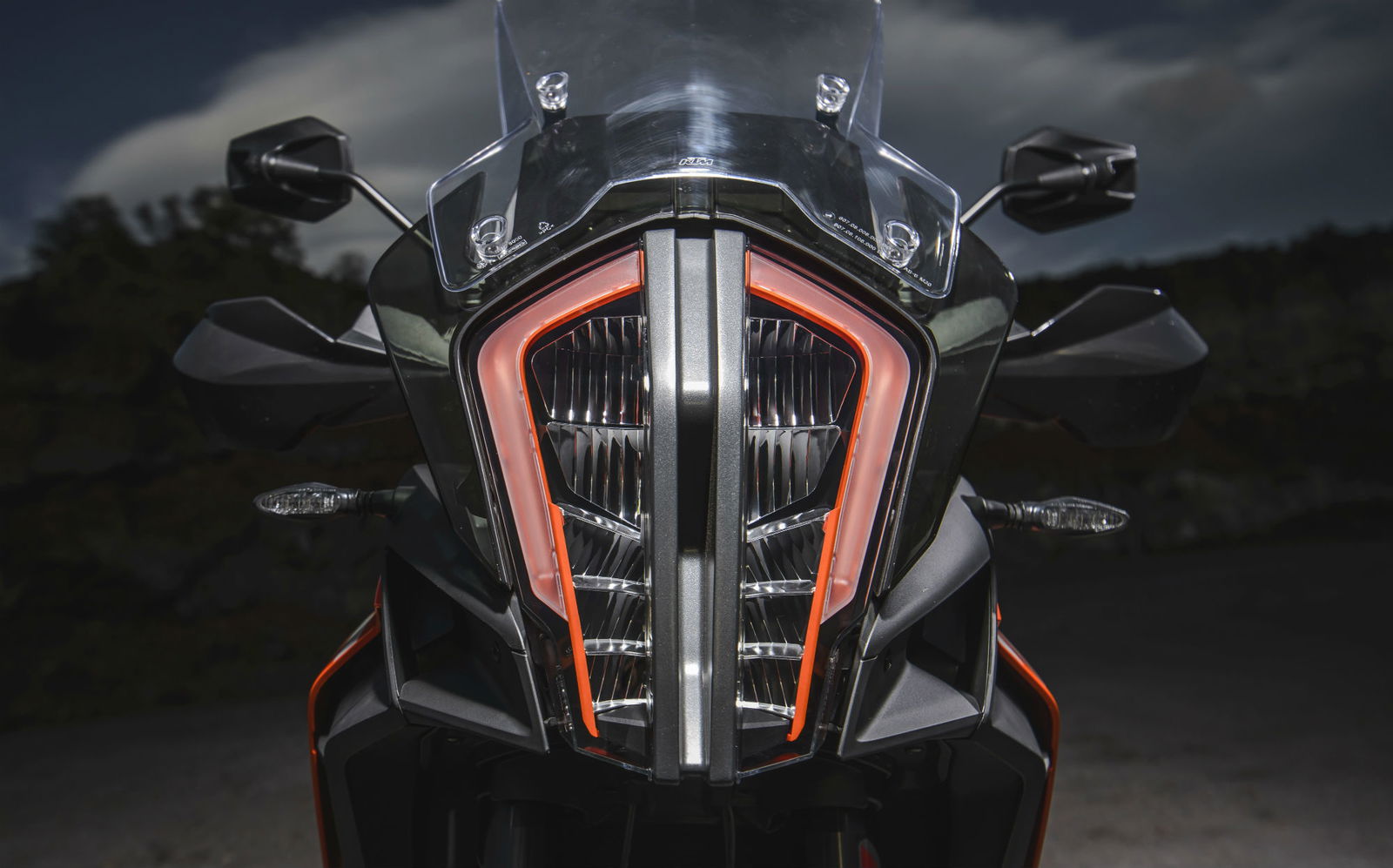
But the KTM’s are quite impressive. The launch test included an evening ride, in which we took turns to tackle a very dark, tree covered, twisty road.
As the bike went into a lean, the cornering LEDs did just what they were supposed to, by bringing light where there had been none. They seemed to match perfectly with the trajectory of the turn, as though lights were being turned on around the corner.
As much as anything it highlighted the inadequacy of normal headlights. The area illuminated by the LED main beam ends in a straight line across the road. As you lean over, the line tilts, retreating from the direction of travel.
The cornering lights remedied that, although there was a slight delay after leaning. Knowing they work, you want them to work instantaneously.
I think my only other criticism is that the 1290 could prove tricky to get into neutral, going straight from first to second instead. That’s annoying, isn’t it? If you can do cornering ABS, surely you can get basics right?
Otherwise the KTM 1290 Super Adventure S remains possibly the most impressive all-round motorcycle I have ridden.
Model tested: KTM 1290 Super Adventure S
Price: £14,299
Engine: 1301cc liquid-cooled 75° V-twin
Power: 160hp @ 8,750 rpm
Torque: 103lbft @ 6,750 rpm
Dry weight: approx. 215kg
Traction control: four-mode, disengageable
Frame: Chromium-Molybdenum-Steel trellis frame, powder coated
Sub-frame: Aluminum, powder coated
Front suspension: WP Semi-active Suspension USD Ø 48 mm
Rear suspension: WP Semi-active Suspension shock absorber
Suspension travel front/rear: 200/200 mm
Front brake: 2 x Brembo four piston, radially mounted caliper, brake disc Ø 320 mm
Rear brake: Brembo two-piston fixed caliper, brake disc Ø 267 mm
ABS: Bosch 9ME Combined-ABS (incl. cornering ABS and offroad mode, disengageable)
Wheels: Cast aluminum 3.50 x 19” front; 5.00 x 17” rear
Tyres: 120/70 ZR 19 front; 170/60 ZR 17 rear
Seat height: 860/875mm
Fuel capacity: approx. 23 litres (3.5 litres reserve)
Colurs: orange/white, black
